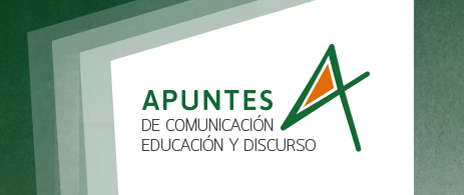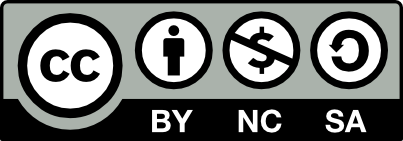Consumers or Subjects of Law? Education, between ICTs and TEPs
DOI:
https://doi.org/10.24215/25252046e009Keywords:
education, ICTs, mediations, empowermentAbstract
This article reviews the place of technologies in pedagogical and cultural mediation. It starts by explaining how ICTs have entered the political agendas of the region, to explore some conceptions about their inclusion in educational processes. Then, we make some reflections that allow us to think that if the media and technologies are mediated, it is not less true that they are mediating in everyday practices and becoming structural. The vertiginous penetration of ICTs in the population challenges education to convert these devices into technologies of empowerment and participation (EPTs).Downloads
References
AREA MOREIRA, D. (2012). Políticas educativas TIC en los sistemas escolares en Iberoamérica. Miradas desde las dos orillas. Campus Virtuales, 1(1), 7-9. Recuperado de http://www.uajournals.com/campusvirtuales/journal/1/0.pdf
BAUTISTA, A. (1989). El uso de los medios desde los modelos del currículum. Comunicación, lenguaje y educación, 1(3-4), 39-52.
BRUN, M. (2011). Las tecnologías de la información y las comunicaciones en la formación inicial docente en América Latina. Santiago de Chile, Chile: Economic Commission for Latin American and the Caribbean (ECLAC), Naciones Unidas. Recuperado de https://www.researchgate.net/publication/261637890_Las_tecnologias_de_la_informacion_y_las_comunicaciones_en_la_formacion_inicial_docente_de_America_Latina
CHURCHES, A. (2008). Taxonomía de Bloom para la era digital. Recuperado de http://eduteka.icesi.edu.co/articulos/TaxonomiaBloomDigital
ComScore MMX (2017). Futuro digital 2017: América Latina. Miami, Estados Unidos. Recuperado de http://www.comscore.com
JARA VALDIVIA, I. (2008). Las políticas de tecnología para escuelas en América Latina y el mundo: visiones y lecciones. Santiago de Chile, Chile: Comisión Económica para América Latina y el Caribe (CEPAL), Naciones Unidas.
MARTÍN BARBERO, J. (1988). Euforia tecnológica y malestar en la teoría. Diálogos de la Comunicación, (20), 8-16.
MARTÍN-BARBERO, J. (1998). «De la comunicación a la filosofía y viceversa: nuevos mapas, nuevos retos». En AA.VV. Mapas nocturnos. Diálogos con la obra de Jesús Martín Barbero (pp. 215-134). Bogotá, Colombia: Siglo del hombre.
MARTÍN BARBERO, J. (2002). Tecnicidades, identidades, alteridades: desubicaciones y opacidades de la comunicación en el nuevo siglo. Diálogos de la Comunicación, (64), 8-24.
MARTÍN ORTEGA, E. y MARCHESI ULLASTRES, Á. (2006). Propuestas de introducción en el curriculum de las competencias relacionadas con las TIC. Buenos Aires, Argentina: Instituto Internacional de Planeamiento de la Educación (IIPE), UNESCO y Ministerio de Educación de la Nación. Recuperado de https://www.buenosaires.iiep.unesco.org/sites/default/files/2_propuestasdeintro_6.pdf
MATA, M. C. (1997). Públicos y consumos culturales en Córdoba [proyecto de investigación]. Córdoba, Argentina: Centro de Estudios Avanzados, Universidad Nacional de Córdoba.
OROZCO GÓMEZ, G. (2002). Pedagogía de la tele-e-videncia (una propuesta mexicana de educación de las audiencias). Cuadernos Ininco (1), La televisión, ¿enemiga o aliada? Caracas, Venezuela: Universidad Central de Venezuela.
PRENSKY, M. (2001). Nativos e inmigrantes digitales. Recuperado de http://goo.gl/WaTSC8
REIG, D. y VILCHES, L. (2013). Los jóvenes en la era de la hiperconectividad. Tendencias, claves y miradas. Madrid, España: Fundación Telefónica.
SARTORI, G. (1998). Homo videns. La sociedad teledirigida. Buenos Aires, Argentina: Taurus.
SITEAL (2015). Informe sobre tendencias sociales y educativas en América Latina 2014. Políticas TIC en los sistemas educativos de América Latina. IIPE-UNESCO en Buenos Aires y la OEI. Recuperado de http://bit.ly/1gid3Js
SUÁREZ GUERRERO, C. (2006). Los entornos virtuales de aprendizaje como instrumento de mediación. Investigación Educativa, 10(18), 41-56.
Downloads
Published
How to Cite
Issue
Section
License
The acceptance of an original by the journal implies the non-exclusive transfer of the patrimonial rights of the authors in favor of the publisher, who allows the reuse, after its edition (postprint), under a Creative Commons License Attribution-NonCommercial-ShareAlike 4.0 International.
According to these terms, the material can be shared (copy and redistribute in any medium or format) and adapted (remix, transform and create another work from the material), provided that a) the authorship and the original source of their publication (magazine and URL of the work) are cited, b) is not used for commercial purposes and c) the same terms of the license are maintained.
The assignment of non-exclusive rights implies that after postprint in Apuntes de comunicación, educación y discurso authors may publish their work in any language, media and format; in that case, it is requested that they signal that the material was originally published by this journal.
Assignment also entails the authors’ authorization for the work to be collected by SEDICI, the institutional repository of the Universidad Nacional de La Plata, and for it to be indexed in the databases that the publisher thinks appropriate for enhancing the visibility of the published work and its authors.
In addition, the journal encourages authors to submit their works to other institutional and thematic repositories after their publication in Apuntes de comunicación, educación y discurso, under the assumption that offering society unrestricted access to scientific and academic production contributes to a greater exchange in global knowledge.


















